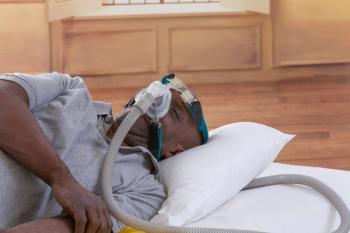
Preventing Loneliness Among the Senior Population During the COVID-19 Crisis
“The brunt of COVID-19 will be borne by the poor, elderly, and sick, and it is up to us to ensure they are not left behind” – Former US Surgeon General Vivek Murthy
Each day, as numbers affected by the worldwide pandemic escalate, one thing is clear: no matter where they live, the elderly face the highest risk. “The brunt of COVID-19 will be borne by the poor, elderly, and sick, and it is up to us to ensure they are not left behind,”
By 2030, adults over the age of 65 are expected to account for 20% of the American population. And by 2050, 24% of older adults will be at least 85 years of age, according to the
These numbers take on a different meaning in light of the
CareMore Health CEO Sachin H. Jain, MD, MBA, whose health system took on senior loneliness in a systematic way more than 2 years, ago, wrote recently, ‪"There has never been a time where we should be more worried about loneliness and social isolation—and its attended consequences suicide and depression. Regularly call someone you know is lonely. Better yet, FaceTime or Skype them. Be part of the solution."
According to a
In a recent interview with The American Journal of Managed Care® (AJMC®), Brian G. Lawrence, LNHA, CPA, MBA, president and CEO of
What can we do to help the members of or communities, our families, our friends who are older and may feel more isolated than the rest of us come through these tough and uncertain times? How can we uplift their spirits and lessen what are sure to be feelings of isolation and loneliness in the day and weeks, perhaps months, ahead?
Here are some suggestions the AJMC® team rounded up:
Be innovative. At Fellowship, “to keep people’s spirits up, to keep them entertained and connected, we converted one of our spaces to a studio where we stream live activities and events and programming to an in-house channel that goes throughout the community. We’re streaming religious services, entertainment, lectures, any type of content we can. We put out a schedule. We’re always looking to add to it. To ensure people have something to look forward, something to enjoy besides watching tv all the time,” noted Lawrence.
On the brightside, so many individuals and organizations, musicians, artists, have come forward, streaming their performances online. Countless museums offer virtual tours. Churches, synagogues, and temples are streaming their religious services. Fitness classes have even been thrown into the mix. How about downloading photos on to a digital picture frame and sending that to a homebound senior? Or sharing a virtual meal? On that note…
Teach the technology. This writer’s mother went from having no cell phone a few years ago, to an iPhone, mini iPad, and a second full-size iPad. Field the questions, offer the help, have the patience, teach the technology. If they are not familiar, we must walk our seniors through new devices and tablets and programs and apps and streaming services. There are also online resources.
All of these new-fangled devices are loaded with choices that even make it easy to stay in touch, such as FaceTime, Facebook Messenger,
Pick up the phone. The landline (Yes! These do still exist.) has rung more times in my house over the past 2 weeks than I think it has in the past 2 months. Text messages just aren’t the same. Use the phone every day, on a regular basis, to call your older loves ones, even your older neighbors just to check in, even if it’s just to say hi.
“Last week, we called every single one of the independent living residents ourselves. We called them to check in, see how they are doing, how they’re feeling, to talk to them,” Lawrence said.
Most of all, listen. “We need to try to understand this from their perspective, and hear their voices to tell us what they need,”
Newsletter
Stay ahead of policy, cost, and value—subscribe to AJMC for expert insights at the intersection of clinical care and health economics.













































